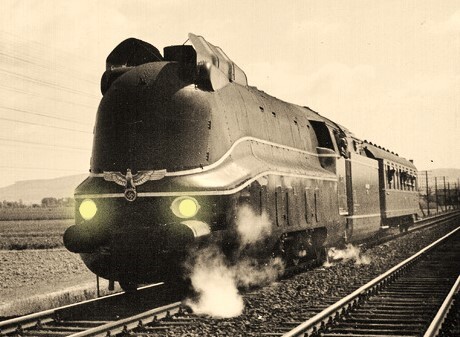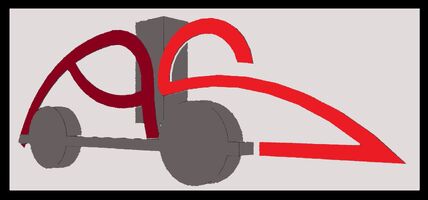Locomotive headlights regulation by the DRG / DRB
Regulation at the DRG/DRB
When the long-distance communication options were not as good as they are today, there was a regulation for informing the many railway and gate attendants to announce an additional train (special train) that was scheduled at short notice - for example when a heavy freight train was divided or a special train (e.g. government train). ) into the scheduled train and a second train following at block distance.
Each train had to have two final signals on the last vehicle, two red discs during the day and two red lanterns at night.The announcement of a subsequent special train was given by the scheduled train preceding the special train using Zg 8, whereby instead of two red discs or lanterns, at the rear of the train there was a red disc or lantern on the right and a white disc or lantern on the left.
An oncoming train announced this special train to the guards with the signal Zg 7, during the day with a white window, and at night with the upper white light on the train locomotive switched on. The engineer of this oncoming train was informed in advance and switched on the third light. He deleted it again as soon as the announced special train came towards him.
- all trains whose timetables have not been communicated to the signalmen in writing beforehand.
- all Reich government trains whose timetables were not previously communicated to the signalmen in writing for security reasons.
- all trains designated as on-demand trains in the timetable, unless regular running of these has been scheduled for a certain period of time and announced to the signalmen.
In electric locomotives and diesel locomotives, the signal lamp was always permanently installed and its switch on the driver's cab was labeled "signal lantern".
All locomotives only have a two-light headlight (locomotive lighting at the front); it was only in 1957 that the DB, when the road traffic regulations were reorganized, required a three-light headlight for the locomotives.
All a.s.modellbahn vehicles/locomotives from Era II have this identical and stylish two-light headlight.

